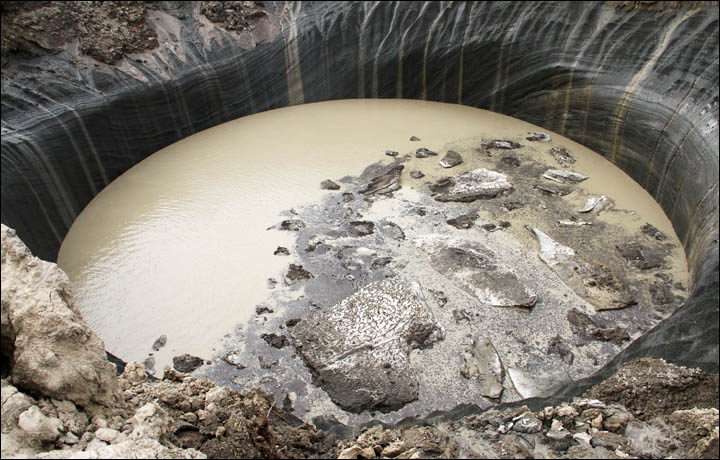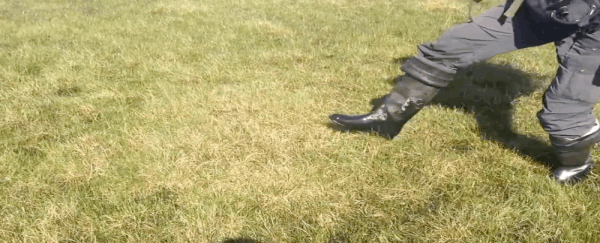The frozen plains of northern Siberia's tundra have been pretty weird over the past couple of years - scientists have spotted giant holes appearing seemingly out of nowhere, and a giant chasm opened up that locals call the "gateway to the underworld".
But now local media has reported that the land has literally started bubbling beneath people's feet on Siberia's remote Belyy Island.
A video just released by the Siberian Times shows a researcher stepping on what looks to be a normal patch of grass - until it starts bizarrely wobbling like jelly. You can check it out for yourself below:

According to the Siberian Times, 15 of the patches have been discovered on the island so far, averaging around 1 metre in diameter.
Environmental researchers Alexander Sokolov and Dorothee Ehrich first spotted the bubbles last year. They've been working on the island in the Kara Sea for years, as it's a popular place to monitor climate change thanks to its large polar bear population.
But they stumbled across the blister-like bubbles purely by accident, and were surprised to find them there again this year.
On their latest expedition, they've stripped the grass and dirt from one of these bubbles and recorded the escaping air, showing that it contains around 200 times more methane than normal air, and 20 times more carbon dioxide.
So what's going on here? More research needs to be done, but one hypothesis is that Europe's recent heatwave caused the tundra's permafrost to thaw, releasing methane gas just below the surface.
"It is likely that that 10 days of extraordinary heat could have started some mechanisms, [and the] higher level of permafrost could have thawed and released a huge amount of gases," Sokolov told the Siberian Times.
"Geologists suppose that there might be some gas leaking from the underground but it's unlikely. There is solid permafrost under the bubbles."
Although we have no research to back that hypothesis up just yet, it's not too out there - leaky methane released by melting permafrost has already been linked to strange sinkholes and craters appearing across Siberia, like this one discovered in 2014:
 Vasiliy Bogoyavlensky
Vasiliy Bogoyavlensky
What's more worrying is that there's concern that all this newly released methane will actually exacerbate global warming further, with one study estimating that by 2100, up to 205 billion tonnes of carbon emissions will be released by permafrost if climate change continues to intensify, as Sarah Emerson reports for Motherboard.
This bubbling on Belyy Island could be a sign of this happening, and seeing as the planet has just come out of its 14th hottest month on record in a row, that's not unlikely.
"It is evident even to amateurs that this is a very serious alarm," said Sokolov. "As for the future, we are interested in further study of the bubbles."
The team will now continue to study the tundra until 15 August to try to get some more insight into what's going on, and geologists will be monitoring the region closely.
Let's just hope Siberia's tundra can hold onto its methane for a little bit longer, because the last thing we need is more of these strange methane blisters popping up all over the world.
